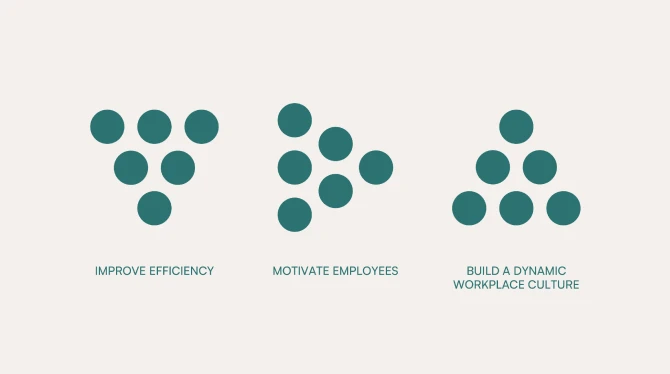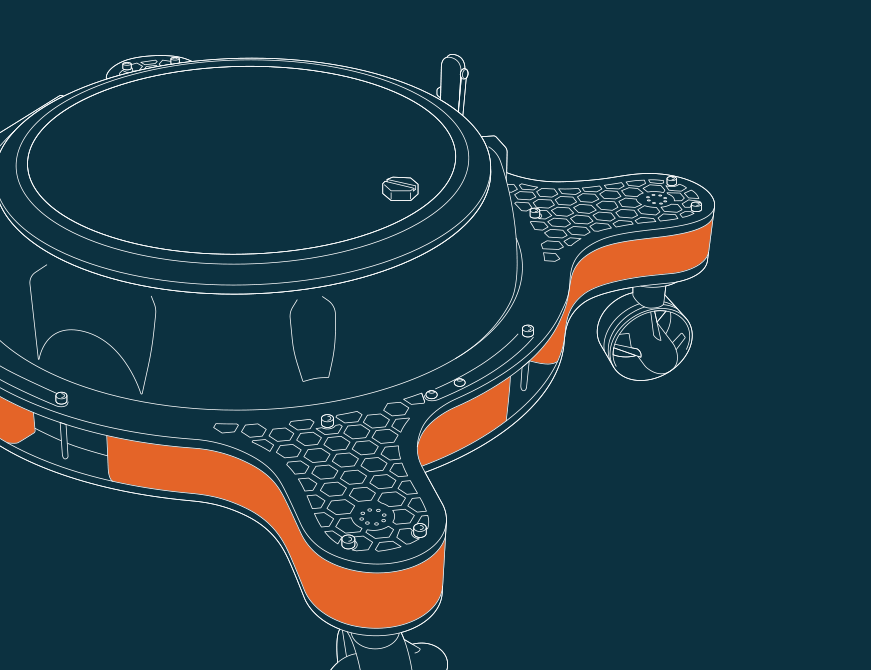🎯
How Branding Direction Varies For Different Types Of Businesses
LAST UPDATED 30 Sep, 2025
You are starting a new business and need to decide the branding direction.
Or, you’ve already been around for a while and are struggling to grow.
You have a good product, but people don’t seem to see its value. Maybe they just don’t understand why they need your product.
Or, maybe you’re triggering them towards buying a financial product while you’re selling a sports product.
Let’s explore the differences in branding direction depending on the type of business you are running.
Need to hire a creative team?
See our workThe Buyer Persona Shift
Framing your brand visually and verbally to speak expectations and create desires is driven by defining a good buyer persona.
Here lies the tricky part.
Someone who is scoping to purchase HR software for their department during work hours might look for a new dress or shirt in their off time. Each person will fill in multiple shoes during the day and their buyer persona will shift based on the situation and the needs delta at any given moment. This will happen from the problem recognition phase to the post-purchase phase. 1
Since you are always targeting people (not businesses), the thing to nail down is the expectation they are going to have after establishing contact with your brand, and later on when considering purchase.
I would like to focus on the type of business or rather type of transaction that will occur. This can be extended to the type of value this person will get, and how it will be delivered.
One of the most important factors when purchasing decisions are made is perceived value.
For example, a person who is getting a new lawn mower is thinking about how to keep their lawn nice and tidy. They might be interested in a larger and more expensive lawn mower because their gardener will spend fewer hours to mow the lawn. The perceived value is SAVING.
Another person from that same neighborhood will also scope a new lawn mower, perhaps the same one. They will have a different reason though; they want their neighbors to view them as a household or family that is wealthy. The perceived value is STATUS.
Therefore, when understanding the best brand direction for your business, one key factor to observe and understand is what kind of people you are talking to and what kind of expectations they have from your brand and product.
The type of business you are running will significantly affect your branding direction.

B2B Branding (Business-to-Business)
In B2B branding, the buying process is often longer and more complex, involving multiple stakeholders who are looking for solutions that deliver desired results.
With this type of business, your branding needs to speak trustworthiness and reliability and display a deep understanding of the industry your solution is offering. Some key elements to focus on are:
- Professional tone and visuals – your branding should be polished and professional, often leaning towards conservative and straightforward design choices that convey stability and credibility. Think of brands like IBM 2 and Oracle 3 — clean, simple logos, and a consistent, no-nonsense tone in their messaging;
- Expertise and thought leadership – positioning your brand as a thought leader is crucial. This can be achieved through content marketing that focuses on industry insights, whitepapers, case studies, and webinars. In one project, we developed several whitepapers that ended up increasing conversion by 36% and decreasing the sales cycle by 11%. Your audience needs to feel that your brand is not just a supplier, but a partner who understands their challenges and can provide reliable solutions;
- Relationship building – in B2B, relationships are key. Your branding should foster trust and long-term relationships rather than just pushing for quick sales. Set aside a budget for branded and personalized gifts to your most important partners at least once a year.
All of these elements should be reflected on your website, sales collateral, and advertising. But it goes deeper than that, the brand ethos should be set forth in sales training, customer services, and the overall culture of the company.
B2C Branding (Business-to-Consumer)
In B2C branding, the focus should be all about connecting with your end consumers on a personal level.
Contrasting B2B branding, the buying phases in B2C branding are more impulsive and emotionally driven, meaning your brand needs to appeal to the desires, needs, and aspirations of individuals. Impulse buying occurs frequently with shoppers, so make use of it.

You need to create a dream come true scenario, play the long game, and ensure that your consumers become brand fans. Some essential key elements are:
- Spark a desire – your branding should evoke emotions and connect with consumers’ aspirations and desires. Brands like Nike and Coca-Cola excel in this area, using storytelling and powerful visuals to deeply connect and create desires within their audience;
- Lifestyle alignment – position your brand as part of the consumer’s lifestyle. This can be achieved through influencer marketing, social media engagement, and campaigns that resonate with the values and interests of your target audience. Going viral can be a strategy, even though certain risks are involved; 4
- Visual impact – B2C branding is often more vibrant and visually engaging than B2B. Bold colors, dynamic imagery, and creative design elements are commonly used to capture attention and create a memorable brand presence. Following trends can be very important for the success of your brand. 5
D2C Branding (Direct-to-Consumer)
D2C branding requires a strong emphasis on authenticity, transparency, and a direct connection with the customer. The brand’s story, narrative, and mission often play a significant role in building loyalty and trust. Some key elements to focus on are:
- Authentic brand story – consumers gravitate towards D2C brands that have a compelling and authentic brand story. This narrative should reflect the brand’s mission, values, and the founder’s vision. For example, Warby Parker’s story of providing affordable eyewear with social impact resonates deeply with its audience; 6
- Emotional connection – creating a strong emotional connection will increase the CLV of your customers and they will become much more valuable to you over time; 7
- Transparency and trust – transparency is a cornerstone of D2C branding. Consumers expect honesty about product sourcing, pricing, and business practices. Brands like Everlane have built their reputation on “radical transparency,” openly sharing the cost breakdown of their products;

- Customer experience – since D2C branding interacts directly with your customers, the overall customer experience, from website design to packaging and post-purchase support, must be seamless and satisfying. This experience should reinforce the brand’s promise and build a personal connection with the consumer. A rising trend in personalization has shown that businesses will get more value from customers over time if they focus on offering specific deals that appeal to them. 8

C2C Branding (Consumer-to-Consumer)
C2C branding relies heavily on the trust and interaction between users. Your brand needs to foster a strong sense of community, safety, and trustworthiness, ensuring that both buyers and sellers feel confident using your platform or brick-and-mortar C2C. Items to focus on are:
- Community building – the success of C2C branding hinges on the ability to build and nurture a community. This involves creating platforms where users feel a sense of belonging and connection. For instance, Airbnb’s branding emphasizes the idea of “belonging anywhere,” fostering a global community of travelers and hosts. End customers will identify with this and stick to Airbnb instead of searching for other providers;
- Trust and safety – trust is paramount in C2C branding and transactions. Your branding should include strong assurances of safety, with visible user reviews, ratings, and secure and trusted payment methods. Branding efforts should continually emphasize the reliability of your platform and the security of transactions;

- User experience – the usability of your platform or store is a critical part of your brand. It should be intuitive, easy to navigate, and designed to facilitate exchange. Consistent branding across the user interface, customer support, and marketing communications is key to building trust and encouraging ongoing use. Take Etsy as an example, which has focused vastly on UX and managed to increase its revenue from $441 million in 2017 to $1.72 billion in 2020. 9
Revise and Improve
The best brands are the ones that evolve and adapt. Even if you are heading in the right direction, it’s very important to stay relevant and keep conforming to your buyer persona.
Branding is something that should continually be worked on and refreshed. Even if you reach a point where a complete overhaul is needed. 10
“Your Brand is the single most important investment you can make in your business.”
-Steve Forbes
Investing in the right branding direction will bring you a significant revenue increase in the long run. 11
Don’t hesitate to book a free consultation call to review your branding in detail.
Sources
1
Different stages of the buying process
2
IBM website
3
Oracle website
4
Going Viral – Is it Beneficial or is it Too Risky?
5
AIGA Design Futures Research
6
Warby Parker Impact Report
7
Why you should invest into good branding
8
Key success factors for Direct-to-Consumer (D2C) Business Models in E-Commerce
9
Etsy Financial Statements
10
The Difference Between Rebranding And A Brand Refresh
11
Design as a strategy


